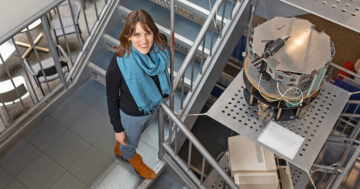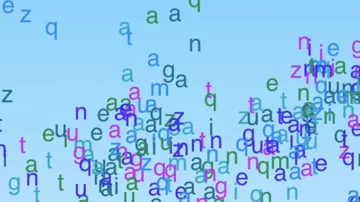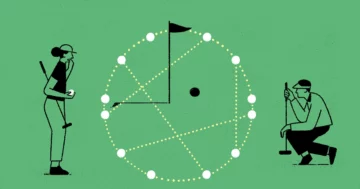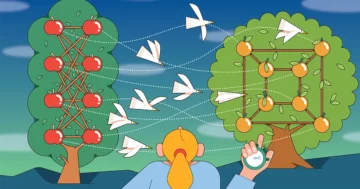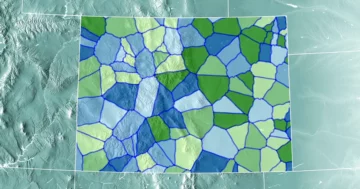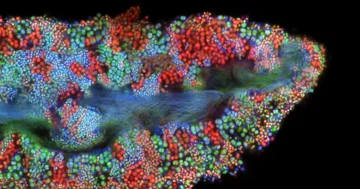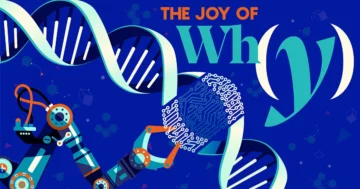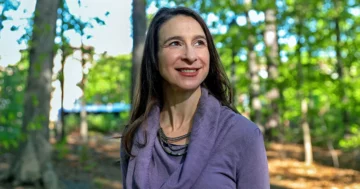
Introduction
In 2018, as he prepared to be awarded the Fields Medal, math’s highest honor, Akshay Venkatesh carried a piece of paper in his pocket. On it, he had written a table of mathematical expressions that for centuries have played a key role in number theory.
Though the expressions had featured prominently in Venkatesh’s own research over the last decade, he carried them around not as a memento of what he’d accomplished, but as a reminder of something he still didn’t understand.
The columns of the table were filled with cryptic-looking mathematical expressions: On the far left were objects called periods, and on the right, objects called L-functions, which might be the key to answering some of the most important questions in modern mathematics. The table suggested some kind of relationship between the two. In a 2012 book with Yiannis Sakellaridis of Johns Hopkins University, Venkatesh had worked out one direction of it: If they were handed a period, they could determine whether it had an associated L-function.
But they couldn’t yet understand the relationship in reverse. It was impossible to predict whether a given L-function had a matching period. When they looked at L-functions, they largely saw disorder.
That’s why Venkatesh kept the paper in his pocket. He hoped that if he stared at the list long enough, the common traits in this seemingly random collection of L-functions would become clear to him. After a year of toting it around, they hadn’t.
“I couldn’t understand what the principle behind this table was,” he said.
2018 was a big year for Venkatesh in more ways than one. In addition to receiving the Fields Medal, he also moved from Stanford University, where he’d been for the previous decade, to the Institute for Advanced Study in Princeton, New Jersey.
Introduction
He and Sakellaridis also started talking with David Ben-Zvi, a mathematician at the University of Texas, Austin who was spending the semester at the institute. Ben-Zvi had built his career in a parallel area of math, investigating the same kinds of questions about numbers that Sakellaridis and Venkatesh were interested in, but from a geometric point of view. When he heard Venkatesh give a talk about this mystery table he carried with him everywhere, Ben-Zvi almost immediately began to see a new way to make periods and L-functions communicate with each other.
That moment of recognition instigated a multiyear collaboration that came to fruition this past July, when Ben-Zvi, Sakellaridis and Venkatesh posted a 451-page manuscript. The paper creates a two-way translation between periods and L-functions by recasting periods and L-functions in terms of a pair of geometric spaces used to study basic questions in physics.
In doing so, it makes progress on a long-held dream within a sweeping research initiative in mathematics called the Langlands program. Mathematicians working on questions in the program seek to build bridges between disparate areas to show how advanced forms of calculus (where periods originate) can be used to answer fundamental open questions in number theory (the home of L-functions), or how geometry can be brought to bear on basic questions in arithmetic.
They hope that once those bridges are established, techniques can be ported from one area of math to another in order to answer important questions that seem intractable within their own domains.
The new paper is one of the first to link the geometric and arithmetic sides of the program, which for decades have advanced largely in isolation from each other. By creating this link, and effectively enlarging the scope of the Langlands program as it was originally conceived, the new paper provides a single conceptual framework for a slew of mathematical connections.
“It unifies a lot of previous disparate-looking phenomena, and that’s always a happy thing for mathematicians,” said Minhyong Kim, director of the International Center for Mathematical Sciences in Edinburgh, Scotland.
Only Connect
The Langlands program was initiated by Robert Langlands, now a professor emeritus at the Institute for Advanced Study. It started in 1967 as a 17-page handwritten letter from Langlands, then a young professor at Princeton University, to Andre Weil, who was one of the best-known mathematicians in the world. Langlands proposed that there should be a way of pairing important objects from calculus called automorphic forms with objects from algebra called Galois groups. Automorphic forms are a generalization of periodic functions like the sine in trigonometry, whose outputs endlessly repeat as inputs grow. Galois groups are mathematical objects that describe how entities called fields (like the real or rational numbers) change when they are extended with new elements.
Introduction
Pairings like that between automorphic forms and Galois groups are called dualities. They suggest that different classes of objects mirror each other, which allows mathematicians to study either one in terms of the other.
Generations of mathematicians have worked to prove the existence of Langlands’ hypothesized duality. Though they have only managed to establish it for limited cases, even those limited cases have often yielded spectacular results. For example, in 1994, when Andrew Wiles showed that Langlands’ proposed duality holds for a particular class of examples, the result was his proof of Fermat’s Last Theorem, among the most celebrated results in the history of mathematics.
As mathematicians have pursued the Langlands program, they have also expanded it in many directions.
One such line has been to study dualities between arithmetic objects that are related to, but distinct from, the ones Langlands was interested in. In their 2012 book, Sakellaridis and Venkatesh studied a duality between periods, which are closely related to automorphic forms, and L-functions, which are infinite sums that attach to Galois groups. From a mathematical point of view, periods and L-functions are entirely different species of objects with no obvious common traits.
Periods emerged as objects of mathematical interest in the work of Erich Hecke in the 1930s.
L-functions are infinite sums that have been used since the work of Leonhard Euler in the mid-18th century to investigate basic questions about numbers. The most famous L-function, the Riemann zeta function, is at the heart of the Riemann hypothesis, which can be viewed as a prediction about how prime numbers are distributed. The Riemann hypothesis is arguably the most important unsolved problem in math.
Langlands was aware of possible connections between L-functions and periods, but he viewed them as a secondary matter in his scheme of joining different areas of math.
“In one paper, [Langlands] considered this study of periods and L-functions as something not worth studying,” Sakellaridis said.
Welcome to the Machine
Though Robert Langlands did not emphasize the connection between periods and L-functions, Sakellaridis and Venkatesh viewed them as central to broadening and deepening the connections between seemingly distant areas of mathematics that Langlands had proposed.
In their 2012 book, they developed a machine of sorts, which took a period as an input, performed a long computation, and output an L-function. Not all periods produce corresponding L-functions, though, and the main theoretical advance of their book was to understand which ones do. (This built on earlier work by Atsushi Ichino and Tamotsu Ikeda at Kyoto University.)
But their approach had two limitations. First, it did not explain why a given period yields a given L-function. The machine that turned one into the other was a black box. It was as if they’d constructed a vending machine that often reliably yielded something to eat each time you put in money, only there was no telling what it would be in advance, or if the machine would eat the money without dispensing a snack.
For any given case, you’d put in your money — your period — then “go and do a long computation and see which among a zoo of L-functions you got,” Venkatesh said.
The second thing they didn’t manage to accomplish in their book was to come to an understanding of which L-functions have associated periods. Some do. Others don’t. They couldn’t figure out why.
They kept working after the book came out, trying to figure out why the connection worked and how to run the machine in both directions — not only getting an L-function from a period, but also the other way around.
In other words, they wanted to know that if they put $1.50 into the vending machine, it meant they were going to get a bag of Cheetos. Moreover, they wanted to be able to tell that if they were holding a bag of Cheetos, it meant they’d put $1.50 into the vending machine.
Because they link objects that, on their face, have nothing in common, dualities are powerful. You could stare at a lineup of mathematical objects forever and not perceive how L-functions and periods match up.
“The way they are defined and given, this period and L-function, there’s no obvious relation,” said Wee Teck Gan of the National University of Singapore.
To translate between superficially incommensurate things, you need to find common ground. One way to do that for objects like L-functions and periods, which originate in number theory, is to associate them with geometric objects.
To take a toy example, imagine you have a triangle. Measure the length of each side, and you can produce a set of numbers that tells you how to write down an L-function. Look at another triangle, and rather than the lengths, look at the three interior angles — you can use those angles to define a period. So instead of comparing L-functions and periods directly, you can compare their associated triangles. The triangles can be said to “index” the L-functions and periods — if a period matches with a triangle with certain angles, then the lengths of that triangle match up with a corresponding L-function.
Introduction
“This period and L-function, there’s no obvious relation in the way they’re given to you. So the point was, however, if you could understand each of them in another way, a different way … you [might] find they are very comparable,” Gan said.
In their 2012 book, Sakellaridis and Venkatesh achieved some of this translation. They found a satisfactory way to index periods using a certain type of geometric object. But they couldn’t find a similar way to think about L-functions.
Ben-Zvi thought he could.
Maxwell’s Dual Hammer
While Sakellaridis and Venkatesh’s work was slightly to the side of Langlands’ vision, Ben-Zvi worked in an area of math that was in a whole different universe — a geometric version of the Langlands program.
The geometric Langlands program began in the early 1980s when Vladimir Drinfeld and Alexander Beilinson suggested a kind of second-order duality. Drinfeld and Beilinson proposed that Langlands’ duality between Galois groups and automorphic forms could be interpreted as an analogous duality between two kinds of geometric objects. But when Ben-Zvi began working in the geometric Langlands program as a graduate student at Harvard University in the 1990s, the link between the geometric and original Langlands programs was somewhat aspirational.
“When geometric Langlands was first introduced, it was a sequence of psychological steps to get from the [original] Langlands program to this [geometric] statement that felt like a different beast,” Ben-Zvi said.
By 2018, when Ben-Zvi had a sabbatical year at the Institute for Advanced Study, the two sides had inched closer together, most notably in work released that same year by Vincent Lafforgue, a researcher at the Fourier Institute in Grenoble. Still, Ben-Zvi planned to use his 2018 sabbatical visit to the IAS for research squarely on the geometric side of the Langlands program. His plan was disrupted when he went to listen to a talk by Venkatesh.
“My son and Akshay’s daughter were playmates, and we were friends socially, and I thought I should go to some of the talks Akshay gave at the beginning of the semester,” Ben-Zvi said.
At one of those early talks, Venkatesh explained the need to find a type of geometric object that could index both periods and L-functions, and he described some of his recent progress in that direction. It involved trying to use geometric spaces from an area of math called symplectic geometry, which Ben-Zvi was familiar with from his work in the geometric Langlands program.
“[Akshay and Yiannis] had been pushing in a direction where they’d started to see things in symplectic geometry, and that rang various bells for me,” Ben-Zvi said.
The next step came from physics.
For decades, physicists and mathematicians have used dualities to come up with new descriptions of how the forces of nature work. The first and most famous example comes from Maxwell’s equations, first written down in the late 19th century, which connect electric and magnetic fields. The equations describe how a changing electric field creates a magnetic field, and how a changing magnetic field in turn creates an electric field. They can jointly be described as a single electromagnetic field. In a vacuum, “these equations have this wonderful symmetry,” Ben-Zvi said. Mathematically, electricity and magnetism can switch places without changing the behavior of the joint electromagnetic field.
Introduction
Sometimes researchers take inspiration from physics to prove purely mathematical results. For example, in a 2008 paper, the physicists Davide Gaiotto and Edward Witten showed how geometric spaces related to quantum field theories of electromagnetism fit into the geometric Langlands program. These spaces come in pairs, one for each side of the electromagnetic duality: Hamiltonian G-spaces and their dual: Hamiltonian Ğ-spaces (pronounced G-hat spaces).
Ben-Zvi had absorbed the Gaiotto-Witten paper when it came out, and he had used the physics framework they provided to think about questions in geometric Langlands. But that work — let alone the physics paper that helped motivate it — had no connection at all to the original Langlands program.
That is, until Ben-Zvi found himself in the audience at the IAS listening to Venkatesh. He heard Venkatesh explain that following their 2012 book, he and Sakellaridis had come to believe that the correct geometric way to think about periods was in terms of Hamiltonian G-spaces. But Venkatesh allowed that they didn’t know what kind of geometric object to pair with L-functions.
That set off bells for Ben-Zvi. Once Sakellaridis and Venkatesh had connected periods with Hamiltonian G-spaces, it became immediately clear what the dual geometric objects for L-functions should be: those Ğ-spaces that Gaiotto and Witten had said were the dual of G-spaces. For Ben-Zvi, all these dualities, between arithmetic, geometry and physics, seemed to be converging. Even though he didn’t understand all the number theory, he was convinced it was all part of “one big, beautiful picture.”
To G or Not to Ğ
In the spring of 2018, Ben-Zvi, Sakellaridis and Venkatesh met regularly at the restaurant on the campus of the Institute for Advanced Study; over the course of a couple months they worked out how to interpret data extracted from L-functions as a recipe for constructing Hamiltonian Ğ-spaces. In the picture they established, the duality between periods and L-functions translates into a geometric duality that makes sense within the geometric Langlands program and originates in the duality between electricity and magnetism. Physics and arithmetic become echoes of each other, in a way that echoes across the Langlands program.
“You might say that the original Langlands setting is now a special case of this new framework,” Gan said.
By unifying disparate phenomena, the three mathematicians have brought some of the order that’s intrinsic to the relationship between electricity and magnetism to the relationship between periods and L-functions.
“The physics interpretation of the geometric Langlands correspondence makes it much more natural; it fits into this general picture of dualities,” Kim said. “In a way, what [this new work is] doing is a way towards interpreting the arithmetic correspondence using the same kind of language.”
The work has limitations. In particular, the three mathematicians prove the duality between periods and L-functions over number systems that arise in geometry called function fields, rather than over number fields — like the real numbers — which are the true home of the Langlands program.
“The basic picture is meant to go over number fields. I think all this will eventually be developed for number fields,” Venkatesh said.
Even over function fields, the work brings order to the relationship between periods and L-functions. For the months that Venkatesh carried around a printout in his pocket, he and Sakellaridis had no idea why those L-functions should be the ones that are associated with periods. Now the relationship makes sense in both directions. They can translate freely across it using a common language.
“I’ve known all these periods and I’ve suddenly learned I can turn each one around and it turns into another one I also knew. It’s a very shocking realization,” Venkatesh said.
- SEO Powered Content & PR Distribution. Get Amplified Today.
- PlatoData.Network Vertical Generative Ai. Empower Yourself. Access Here.
- PlatoAiStream. Web3 Intelligence. Knowledge Amplified. Access Here.
- PlatoESG. Carbon, CleanTech, Energy, Environment, Solar, Waste Management. Access Here.
- PlatoHealth. Biotech and Clinical Trials Intelligence. Access Here.
- Source: https://www.quantamagazine.org/echoes-of-electromagnetism-found-in-number-theory-20231012/
- :has
- :is
- :not
- :where
- ][p
- $UP
- 1994
- 2008
- 2012
- 2018
- 50
- a
- Able
- About
- accomplish
- accomplished
- achieved
- across
- addition
- advance
- advanced
- After
- Alexander
- All
- allowed
- allows
- almost
- alone
- also
- always
- among
- an
- and
- andre
- Andrew
- Another
- answer
- any
- approach
- ARE
- AREA
- areas
- arguably
- arise
- around
- AS
- Associate
- associated
- At
- Atsushi
- attach
- audience
- austin
- awarded
- aware
- bag
- basic
- BE
- Bear
- beautiful
- became
- become
- been
- began
- Beginning
- behavior
- behind
- believe
- bells
- between
- Big
- Black
- book
- both
- Box
- bridges
- Brings
- brought
- build
- built
- but
- by
- called
- came
- Campus
- CAN
- Career
- carried
- case
- cases
- celebrated
- Center
- central
- centuries
- Century
- certain
- change
- changing
- class
- classes
- clear
- closely
- closer
- collaboration
- collection
- Columns
- come
- comes
- Common
- communicate
- comparable
- compare
- comparing
- computation
- conceived
- conceptual
- Connect
- connected
- connection
- Connections
- considered
- constructing
- converging
- convinced
- correct
- Corresponding
- could
- Couple
- course
- creates
- Creating
- data
- decade
- decades
- define
- defined
- describe
- described
- Determine
- developed
- DID
- different
- direction
- directly
- Director
- disorder
- disparate
- Distant
- distinct
- distributed
- do
- doing
- domains
- Dont
- down
- dream
- each
- Earlier
- Early
- eat
- echoes
- Edinburgh
- Edward
- effectively
- either
- Electric
- electricity
- elements
- emerged
- emphasize
- endlessly
- enough
- entirely
- entities
- equations
- establish
- established
- Even
- eventually
- everywhere
- example
- examples
- existence
- expanded
- Explain
- explained
- expressions
- Face
- familiar
- famous
- far
- featured
- felt
- field
- Fields
- Figure
- filled
- Find
- First
- fit
- following
- For
- Forces
- forever
- forms
- found
- Framework
- friends
- from
- fruition
- function
- functions
- fundamental
- gave
- General
- geometry
- get
- getting
- Give
- given
- Go
- going
- got
- graduate
- Ground
- Group’s
- Grow
- had
- happy
- harvard
- harvard university
- Have
- he
- heard
- Heart
- helped
- highest
- him
- his
- history
- holding
- holds
- Home
- honor
- hope
- hopkins
- How
- How To
- However
- HTTPS
- i
- idea
- if
- imagine
- immediately
- important
- impossible
- in
- index
- initiated
- Initiative
- input
- inputs
- Inspiration
- instead
- Institute
- interest
- interested
- interior
- International
- interpretation
- into
- intrinsic
- introduced
- investigate
- investigating
- involved
- isolation
- IT
- Jersey
- johns
- Johns Hopkins
- Johns Hopkins University
- joining
- joint
- July
- kept
- Key
- Kim
- Kind
- Know
- known
- language
- largely
- Last
- Late
- learned
- left
- Length
- let
- like
- limitations
- Limited
- Line
- lineup
- LINK
- List
- Listening
- Long
- Look
- looked
- Lot
- machine
- magazine
- Magnetic field
- Magnetism
- Main
- make
- MAKES
- manage
- managed
- many
- Match
- matches
- matching
- math
- mathematical
- mathematically
- mathematics
- Matter
- me
- meant
- measure
- met
- might
- mirror
- Modern
- moment
- money
- months
- more
- Moreover
- most
- moved
- much
- multiyear
- Mystery
- National
- Natural
- Nature
- Need
- New
- New Jersey
- next
- no
- notably
- nothing
- now
- number
- numbers
- NUS
- object
- objects
- obvious
- of
- off
- often
- on
- once
- ONE
- ones
- only
- open
- or
- order
- original
- originally
- Other
- Others
- out
- output
- outputs
- over
- own
- pair
- pairing
- pairs
- Paper
- Parallel
- part
- particular
- past
- performed
- period
- periodic
- periods
- Physics
- picture
- piece
- Places
- plan
- planned
- plato
- Plato Data Intelligence
- PlatoData
- played
- Playmates
- Point
- Point of View
- possible
- posted
- powerful
- predict
- prediction
- prepared
- previous
- Prime
- princeton
- principle
- Problem
- produce
- Professor
- Program
- Programs
- Progress
- pronounced
- proof
- proposed
- Prove
- provided
- provides
- purely
- Pushing
- put
- Quantamagazine
- Quantum
- Questions
- random
- rather
- Rational
- real
- realization
- receiving
- recent
- recipe
- recognition
- regularly
- related
- relation
- relationship
- released
- reminder
- repeat
- research
- researcher
- researchers
- restaurant
- result
- Results
- reverse
- right
- ROBERT
- Role
- Run
- Said
- same
- saw
- say
- scheme
- SCIENCES
- scope
- Scotland
- Second
- secondary
- see
- Seek
- seem
- seemed
- seemingly
- sense
- Sequence
- set
- setting
- should
- show
- showed
- side
- Sides
- similar
- since
- Singapore
- single
- So
- socially
- some
- something
- somewhat
- son
- spaces
- special
- spectacular
- Spending
- spring
- stanford
- Stanford university
- started
- Statement
- Step
- Steps
- Still
- Student
- studied
- Study
- Studying
- such
- suggest
- sums
- Switch
- Systems
- table
- Take
- Talk
- talking
- Talks
- techniques
- tell
- telling
- tells
- terms
- texas
- than
- that
- The
- the joint
- the world
- their
- Them
- then
- theoretical
- theory
- There.
- These
- they
- thing
- things
- Think
- this
- those
- though?
- thought
- three
- time
- to
- together
- took
- towards
- toy
- translate
- Translation
- true
- trying
- TURN
- Turned
- turns
- two
- type
- understand
- understanding
- Universe
- university
- until
- use
- used
- using
- Vacuum
- various
- version
- very
- View
- viewed
- vincent
- vision
- Visit
- wanted
- was
- Way..
- ways
- we
- webp
- went
- were
- What
- when
- whether
- which
- WHO
- whole
- whose
- why
- will
- with
- within
- without
- wonderful
- words
- Work
- worked
- working
- world
- worth
- would
- write
- written
- year
- yet
- yielded
- yields
- you
- young
- Your
- zephyrnet
- Zeta
- ZOO

